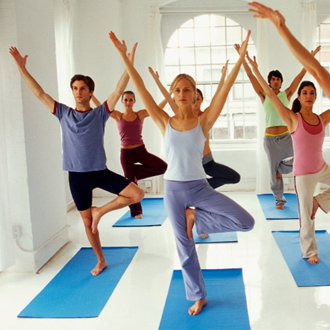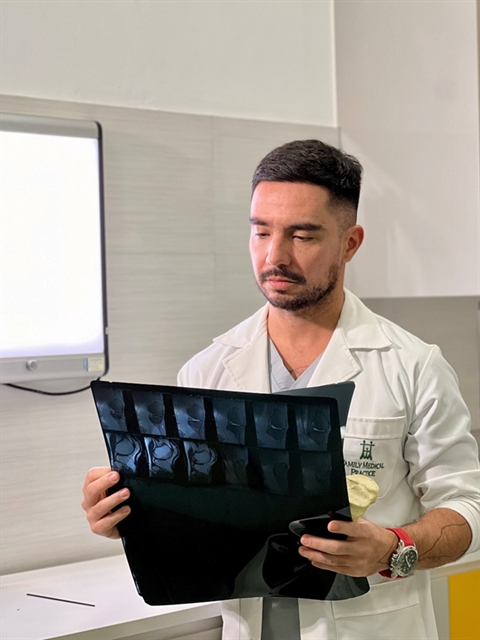 Society
Society

 |
| Yoga and Pilates offer numerous benefits, but be cautious of potential injuries. Photo shutterstock.com |
Dr Andres Sosa*
As an experienced orthopedic surgeon dedicated to promoting health and wellness, I've witnessed firsthand the transformative benefits of yoga and Pilates. These practices offer a holistic approach to fitness, aiding in strength, flexibility and mental well-being. However, like any physical activity, they come with potential risks, especially when not performed mindfully or with proper guidance. For the expat community in Hà Nội, where these disciplines are increasingly popular, understanding and mitigating these risks is crucial for long-term well-being.
The rise of yoga and Pilates
Yoga and Pilates have surged in popularity globally and Hà Nội is no exception. Expats and locals alike are embracing these practices for their ability to enhance physical health and cultivate inner peace. Whether it's the serene stretches of yoga or the controlled movements of Pilates, both offer an escape from the hustle and bustle of daily life.
Understanding the risks
While yoga and Pilates are generally safe for most individuals, injuries can occur, particularly when proper techniques are not followed. Common injuries include strains, sprains and overuse injuries (gradual injuries due to repetitive stress) that impact the joints, muscles and spine. These injuries typically occur due to factors such as overexertion, improper alignment of the body or pushing one’s physical capabilities beyond their limits.
Prevention strategies
1. Start slowly: Whether you're a beginner or an experienced practitioner, it's essential to ease into new poses or movements gradually. Rushing into advanced postures without mastering the basics increases the risk of injury.
2. Listen to your body: Pay attention to how your body feels during practice. Discomfort is normal, but pain is a warning sign. If something doesn't feel right, modify the pose or take a break.
3. Focus on alignment: Proper alignment is key to preventing injuries. Work with qualified instructors who can guide you in aligning your body correctly and offer modifications tailored to your needs.
4. Build core strength: Both yoga and Pilates emphasise core strength, which plays a crucial role in stabilising the spine and preventing injuries. Incorporate exercises that target the core muscles into your routine.
5. Use props wisely: Props such as blocks, straps, and blankets can assist in achieving proper alignment and provide support during challenging poses. Don't hesitate to use them to enhance your practice safely.
6. Cross-train: Incorporating variety into your fitness routine can reduce the risk of overuse injuries. Supplement your yoga or Pilates practice with activities that strengthen different muscle groups (e.g. weight lifting or crossFit) and improve overall fitness (like running, swimming, cycling...).
7. Stay hydrated and nourished: Proper hydration and nutrition are essential for supporting your body's recovery and performance. Drink plenty of water before, during and after practice and fuel your body with nutritious foods.
8. Rest and recovery: Allow your body time to rest and recover between sessions. Overtraining can lead to burnout and increase the likelihood of injury. Listen to your body's signals and prioritise rest when needed.
Conclusion
Yoga and Pilates offer a wealth of benefits for both body and mind, but they require mindfulness and respect for your body's limitations. By understanding the potential risks and implementing preventive strategies, you can enjoy these practices safely and reap their rewards for years to come. Remember, your journey toward wellness is a marathon, not a sprint. Take care of your body and it will reward you with strength, flexibility, and vitality.
As an orthopedic surgeon, I hope this guide empowers the expat community in Hà Nội to embrace yoga and Pilates safely and sustainably. Together, let's foster a culture of health and well-being that enriches lives and promotes longevity. Family Medical Practice
 |
| Dr Andres Sosa. Photo courtesy of Family Medical Practice |
* Dr Andres Sosa is our Orthopedic Surgeon specialising in sports medicine and trauma. After his residency in Orthopedics, he took a master’s in upper limb surgery at the University of Bologna (Italy), a the Sports Medicine programme at Thomas Jefferson University in Philadelphia (USA), and obtained his second master’s in shoulder surgery at the University of Andalucía (Spain). Once in Việt Nam, he continued his surgical training at Arthrex ArthroLab (Singapore) focused on arthroscopic techniques for shoulder and knee injuries.
Visit Family Medical Practice Hanoi 24/7 at 298I Kim Mã St, Kim Mã Wrd, Ba Đình Dist.
To book an appointment, please call us at (024).3843.0784 or via Whatsapp, Viber or Zalo on +84.944.43.1919 or email hanoi@vietnammedicalpractice.com.
FMP’s downtown location in Hồ Chí Minh City is in Diamond Plaza, 34 Lê Duẩn St, Bến Nghé Wrd, District 1, and 95 Thảo Điền St, District 2. Tel. (028) 3822 7848 or email hcmc@vietnammedicalpractice.com.




